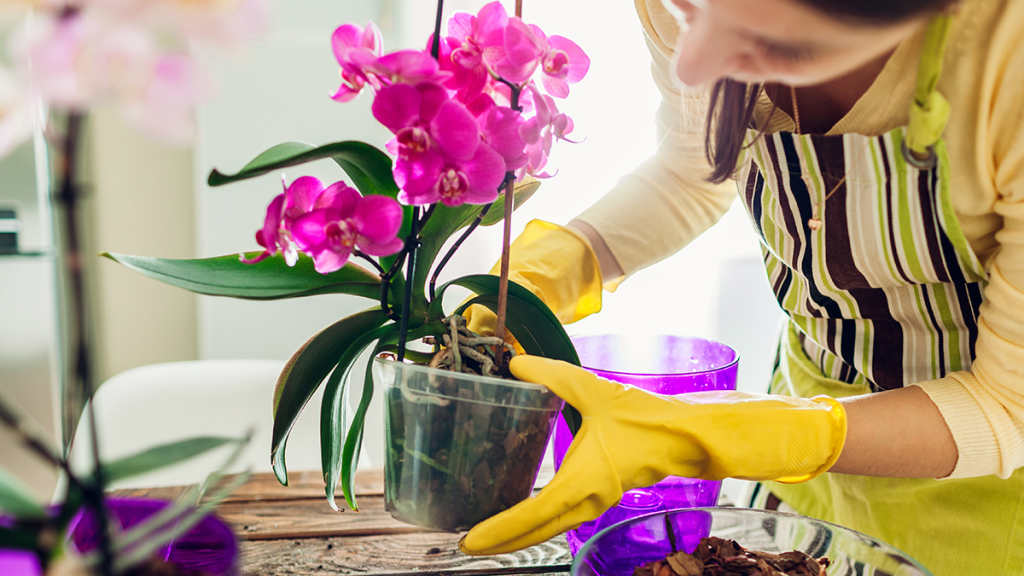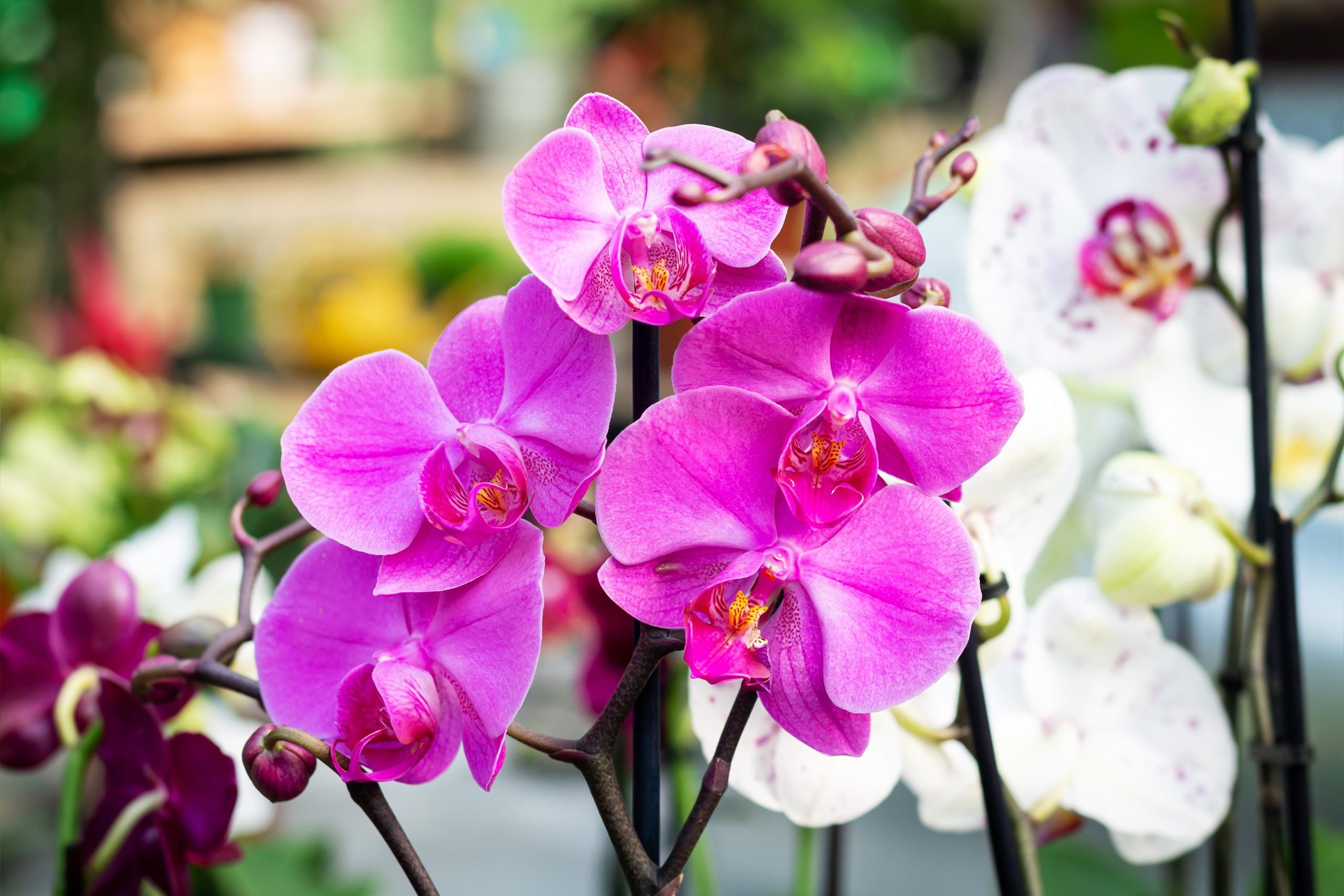How to Care for Orchids: Beauty, Elegance, and Simple Care Tips
The orchid flower has always been a symbol of elegance, luxury, and timeless beauty. With their delicate petals, long-lasting blooms, and exotic charm, orchids are admired across the world. But for many beginners, the big question remains: How to Care for Orchids?
Unlike regular houseplants, orchids come from tropical environments and require a slightly different approach. The good news is that learning how to care for orchids is easier than it seems. With the right tips, anyone can enjoy their beauty at home.
In this blog, we’ll explore the story, symbolism, and care guide for orchids, along with troubleshooting tips and FAQs—everything you need to know about how to care for orchids.
1. The Beauty of Orchids

Orchids are often called the “queens of flowers” for their stunning appearance. They are found in a wide range of colors, from pure whites to vibrant purples, yellows, and pinks. Their graceful form and symmetrical petals make them stand out among all flowering plants.
- Home Décor Charm: Orchids instantly add elegance to living rooms, offices, and dining tables.
- Varieties: With over 25,000 species, orchids come in endless forms—Phalaenopsis (moth orchids), Cattleya, Dendrobium, and more.
- Longevity: One of the most rewarding parts of learning how to care for orchids is that their flowers last for weeks, much longer than most blooms.
Their beauty makes people curious about how to care for orchids, as the right care ensures the plant continues to bloom season after season.
2. Orchids in Tradition and Symbolism

Orchids are not just admired for their beauty; they also carry deep symbolic meanings.
- Love and Luxury: In many cultures, orchids symbolize refinement, elegance, and wealth.
- Gift of Grace: Orchids are one of the most popular gifting flowers, often chosen for anniversaries, celebrations, and special occasions.
- Spiritual Meaning: For centuries, orchids have represented strength, fertility, and beauty.
Knowing how to care for orchids is important if you are gifting them to loved ones. Their long-lasting blooms make them a thoughtful symbol of enduring affection.
3. How to Care for Orchids at Home

Now, let’s dive into the practical part—how to care for orchids in everyday life. Here are the essential steps:
3.1 Light
- Orchids thrive in bright, indirect sunlight.
- Direct harsh sunlight can scorch their leaves, while too little light prevents flowering.
- An east-facing window is perfect for practicing how to care for orchids indoors.
3.2 Watering
- Overwatering is the most common mistake people make when learning how to care for orchids.
- Water only when the potting mix feels dry—usually once a week.
- Always ensure the pot has drainage holes so roots don’t sit in water.
3.3 Temperature & Humidity
- Orchids prefer temperatures between 18–28°C.
- Avoid placing them near heaters, air conditioners, or drafty windows.
- Humidity is key: mist the leaves or keep a small water tray nearby. This is a classic step in how to care for orchids at home.
3.4 Feeding
- Fertilize orchids with a balanced, water-soluble fertilizer.
- Feed once every two weeks during the growing season, and less in winter.
- Regular feeding is one of the secrets to mastering how to care for orchids.
3.5 Potting Mix & Repotting
- Orchids do not grow well in regular garden soil.
- Use a special orchid mix made of bark, moss, or perlite to allow airflow.
- Repot orchids every 1–2 years to refresh the mix and give roots space.
4. After Blooming: What’s Next?
Many beginners ask, What do I do once the flowers fade? This is where understanding how to care for orchids after blooming makes a difference.
- Trimming: Cut the flower spike just above a visible node (a small bump). This can encourage new blooms.
- Resting Period: Orchids often rest after flowering. Keep caring for them with light, water, and fertilizer.
- Patience: With proper care, new buds will appear within a few months.
Knowing how to care for orchids after they bloom ensures you enjoy flowers again and again.
5. Common Problems and Solutions in How to Care for Orchids
Even with care, orchids can face challenges. Here are common issues and how to solve them:
- Yellow Leaves: Often caused by overwatering or too much sunlight.
- No Blooms: Usually due to insufficient light or lack of fertilizer.
- Drooping Flowers: A natural part of the orchid’s cycle; trim and wait for new spikes.
- Pests (aphids, mealybugs, spider mites): Wipe leaves with a damp cloth or use neem oil spray.
Troubleshooting is an essential part of caring for orchids, helping you bring them back to health.
6. Why Orchids Are Worth the Effort

Once you learn how to care for orchids, you’ll realize these plants are not as difficult as they seem. Orchids:
- Last longer than most cut flowers.
- Add elegance to any space.
- Teach patience and attention to detail.
- Make meaningful, long-lasting gifts.
Caring for orchids is not just about keeping a plant alive—it’s about enjoying a relationship with one of nature’s most stunning creations.
7. FAQs
Q1. How often should I water orchids?
Water once a week, only when the potting mix feels dry. Overwatering is harmful.
Q2. Can orchids grow indoors?
Yes! The key to how to care for orchids indoors is giving them bright, indirect light and good airflow.
Q3. Do orchids need direct sunlight?
No, direct sunlight can burn the leaves. Use filtered or indirect light.
Q4. How long do orchid flowers last?
With proper care, blooms last 6–8 weeks, sometimes even longer.




Leave A Comment